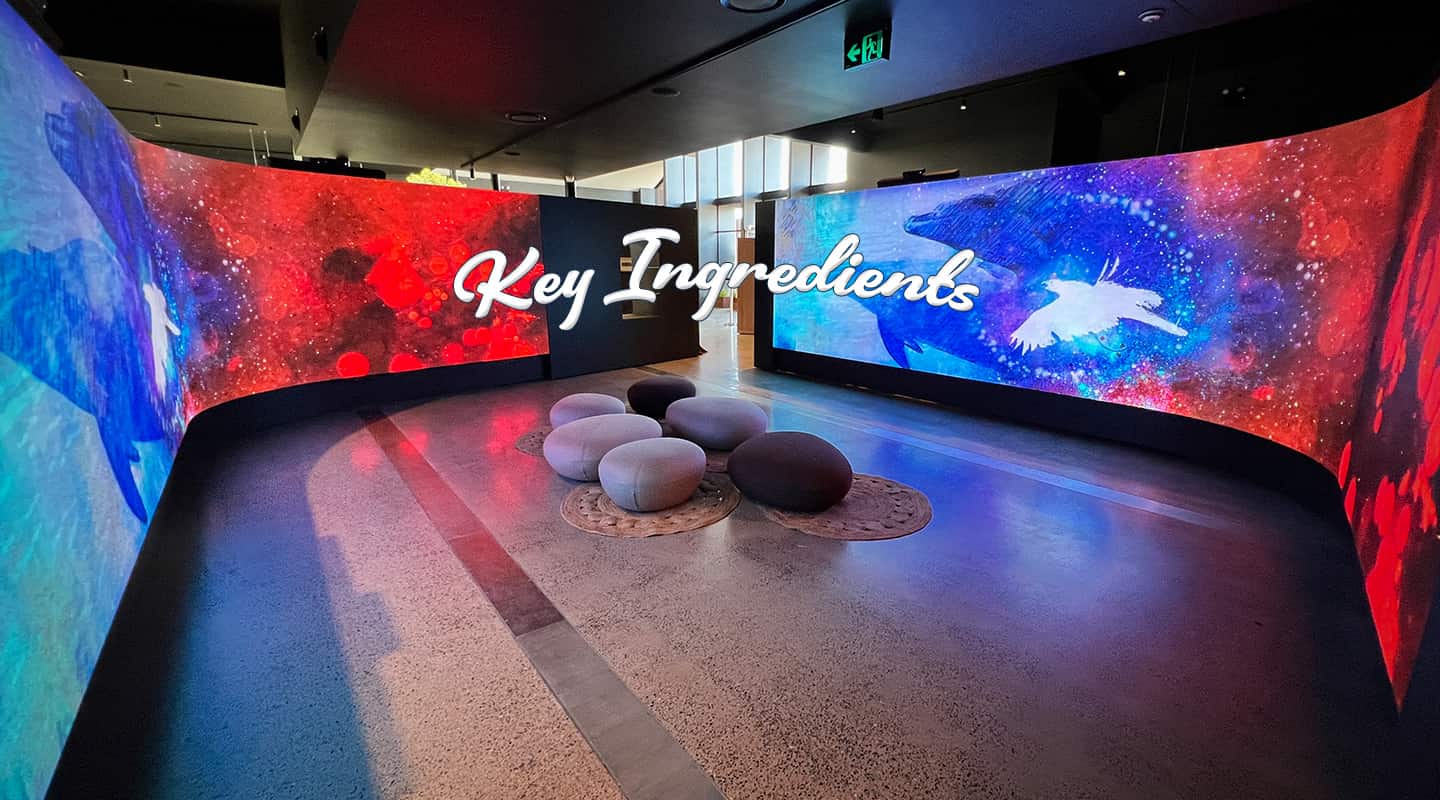
AV Case Study: Murrook Culture Centre
A complex, multi-layered museum display project made engaging and easy to access thanks to great content and intelligent AV design and integration.
Text:/ Derek Powell
Photo:/ Art of Multimedia
The Worimi Local Aboriginal Land Council had some very high expectations of its new Murrook Culture Centre at Williamtown on the NSW Mid-North Coast. The aim was not just to develop the visitor centre as a gateway to the Sand Dune Adventures and other indigenous tourism attractions of the Worimi National Park. Rather, the objective was much wider and more complex: “to serve as a central point of knowledge and information for Worimi people to share with visitors, who can then explore the greater region with an appreciation of the Worimi and other traditional owners of the Hunter region.”
With that brief, Art of Multimedia (AOM for short) commenced a three-year journey to create an interactive and immersive audiovisual experience with a deceptively simple format that belied the layers of technical complexity.

Art of Multimedia’s work on the Murrook Culture Centre won this year’s AVIA for Best Application of AV in a Production, Exhibition or Display against one of the strongest fields in recent competition. It’s a complex project seamlessly incorporating many elements of the audiovisual arts.
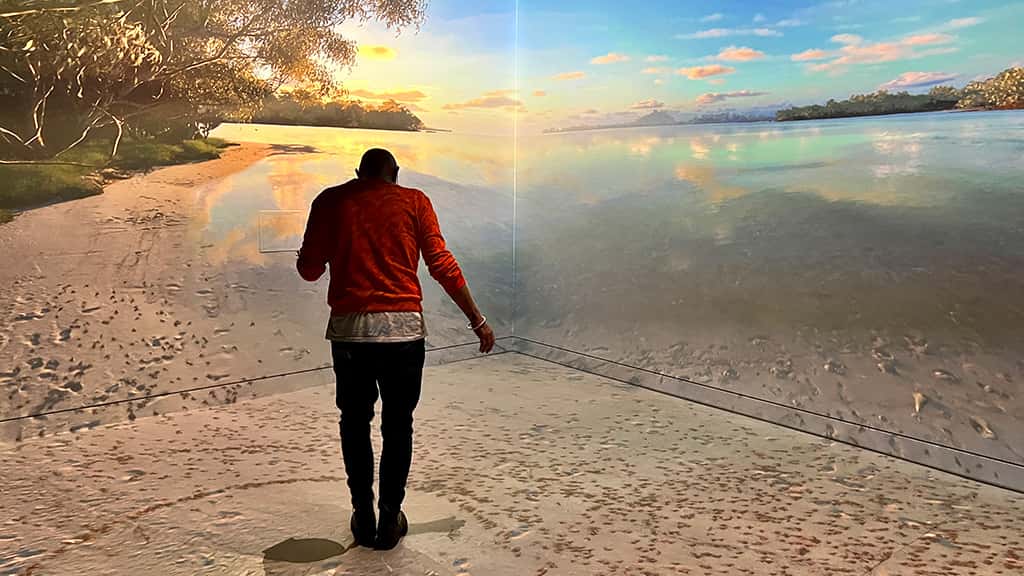
The corner projection area features two depth/motion tracking sensors in the space to track both floor movement and provide an interaction layer with the wall as well, produced by 4 x Panasonic laser projectors fitted with UST lenses. This allows visitors to engage with and manipulate the projected environments enhancing the immersive experience.
BROUGHT TO LIFE
Working with the CEO and curator, as well as in consultation with the elders and the wider Worimi community, the first task for Art of Multimedia Managing Director and Project Director, Beata Kade, was to identify the themes and cultural stories that would be part of the interpretation experience. With the proposed content in mind, the next stage was to design, specify and document the way these narratives could be brought to life and presented to visitors.
Though the initial thought was that existing photography, film and artefacts would provide the content, it soon became clear that to tell the stories and integrate the landscape in an authentic way, AOM would need to produce a great deal of content from scratch. As the project evolved, this required not just audio and video recording, but very sophisticated techniques involving motion capture, animation and even elements of interactive game design.
Moreover, the multi-use nature of the Cultural Centre building required that the space itself needed to be physically reconfigurable. That meant nearly all of the display systems needed to not only present different programming on demand but also be able to be moved around! Thus, the plan that evolved was to create reconfigurable exhibition spaces with hardware elements whose content could change and develop over time.
“”
The AVIA’s international judging panel was impressed by the way Art of Multimedia had used such a broad range of AV technology to bring to life the stories of the community
CONNECTIONS
The current implementation consists of three interconnected audiovisual zones through which visitors may progress or explore individual pathways. As they enter, visitors are greeted by a Welcome Pillar, where video messages from Elders and young Worimi in Gathang language and English personally welcome visitors to Murrook, a ‘Happy Place’.
Adjacent are two interactive ‘story pillars’ where visitors begin to gain an understanding of the Worimi people through recorded testimonial videos. Built-in, museum-grade directional speakers limit the audio coverage to a zone directly in front, without interfering with audio from other kiosks. The woodgrain finished pillars are mobile, which facilitates the easy movement of the kiosks to various locations and also enables their removal, to open up the area for large events. A specially-weighted anti-tip base ensures stability and visitor safety.
Visitors can explore the centre’s archive of historical photos from a clever multiscreen touchtable. Dual Displax 55-inch touchscreens allow for a seamless multi-user experience, encouraging visitor collaboration and engagement.
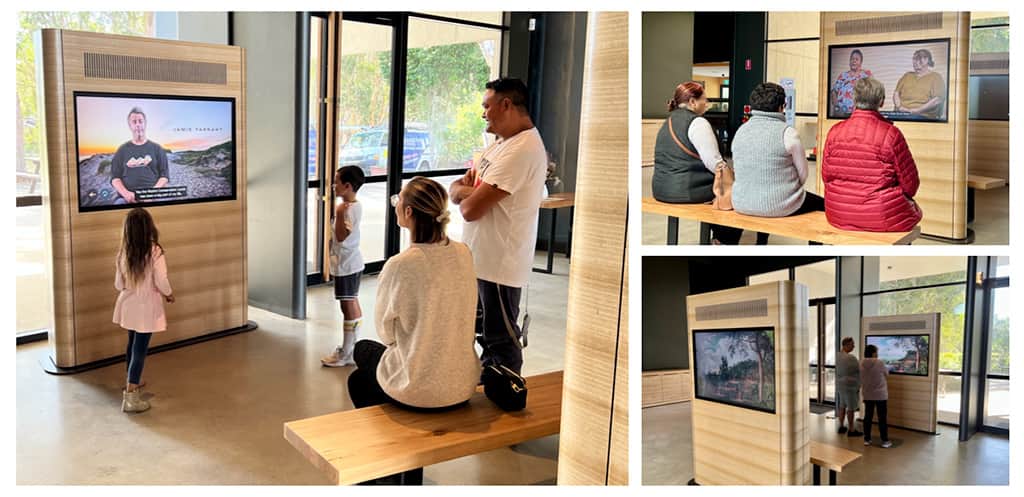
The two interactive Story Pillars showcase 14 individual oral history videos that deliver authentic personal perspectives of Worimi people. The kiosks are designed to be portable to clear the space for events.
LED BY THE HAND
Moving on, visitors enter an interactive space comprised of two curved 9m-wide by 2m-high LED screens. These form a large-scale interactive digital canvas for the Worimi stories. A number of different presentations can be shown here, depending on the audience.
‘The First Worimi’ is an animated creation story narrated by Uncle Graeme Russell. It tells the story of the selfless dolphin Guparr. This animation sequence incorporates fish designed by Worimi children during a cultural education program.
Other content created for the wall includes three sequences of aerial films, which surround the visitor with the Dunes, the River and the Coast of Worimi Country. Within these immersive experiences as visitors approach the walls, sensors track their movement and dynamically reveal layers of content from the same environment filmed at a macro level, increasing this intimate connection to country.
IMMERSIVE PROJECTION
The final space is configured with an immersive and interactive projection system running real-time 3D graphics using Unreal game engine. The installation features five interactive scenes, each representing a different time of day in the Mullet Run, a key cultural story of the Worimi. To create the story, AOM used high resolution scans to generate the digital environments as well as using sophisticated motion capture techniques that transformed the virtual characters movements into realistically moving animated figures.
Here, four Panasonic PT-RZ-890B laser projectors, together with ultra-short throw lenses, create a seamless 5m-square corner projection that includes the floor. Visitors not only feel immersed in the story, but also in the environment as they interact with the various animated creatures that are animated in real-time by the Unreal Engine.
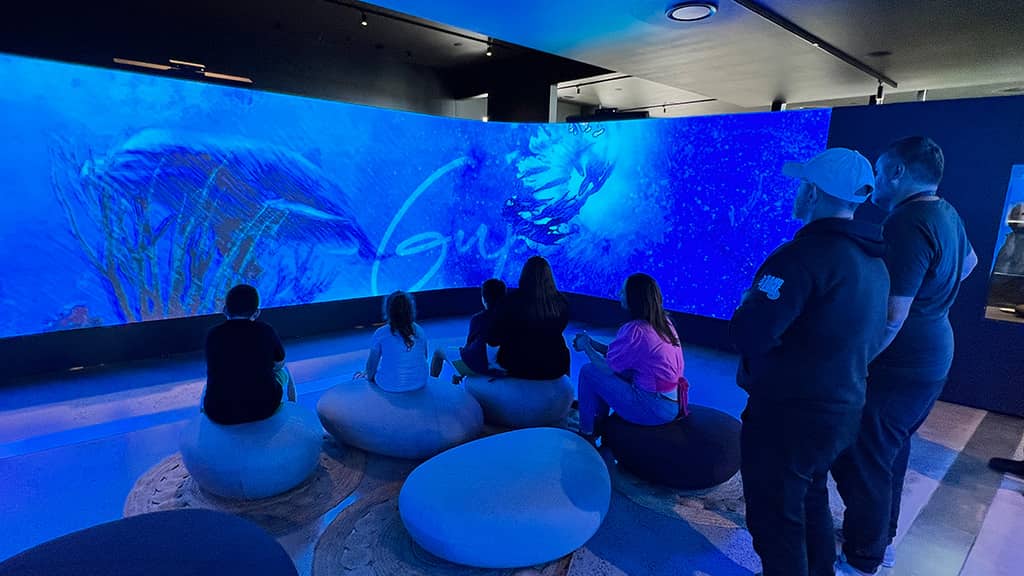
Two repositionable curved walls with 9m x 2m flexible 2mm pitch LED screens form a large-scale interactive digital canvas for the Worimi stories. Each screen has a total resolution of 4560 x 1020 and is managed by a Colorlight X8E LED controller.
HIGH PRAISE
This project was a worthy winner of the 2024 AVIA in the category of Best Application of AV in a Production, Exhibition or Display.
The AVIA’s international judging panel was impressed by the way Art of Multimedia had used such a broad range of AV technology to bring to life the stories of the community. In particular, they noted: “Importantly, their work created visitor impact and involvement in a way that didn’t allow the technology to overpower the story itself.”
Art of Multimedia: artofmultimedia.com.au
EQUIPMENT LIST
Welcome Area
- 1 x 65” Displax Touchscreen equipped LCD display (portrait)
- 2 x 65” Displax Touchscreen equipped LCD displays (landscape)
- 3 x Browns directional speakers
- 1 x Ultra-wide Touch Table (2 x 55” Displax screens)
- 2 x 75” Passive signage displays
Corner Projection Area
- 4 x Panasonic PT-RZ890B 8500 lumens projectors
with Panasonic ET-DLE020 ultra-short zoom lens
or Panasonic ET-DLE060 short zoom lens - 2 x Depth sensor cameras
- 2 x Browns directional speaker
- 1 x Focusrite Scarlett 18i20 Audio interface
LED Wall
- 2 x Command Digital custom LED walls 9.12m x 2.04m 2mm pitch flexible LED modules with curved corners
- Total resolution 4560×1020
- 2 x Colorlight X8E LED video controllers
- 4 x Orbec Depth Sensor cameras
- 4 x Browns directional speakers
- 1 x Focusrite Scarlett 18i20 Audio Interface
TEAM DETAILS
Digital Experience Design & Implementation
Beata Kade Project Director, Producer, MD, Art of Multimedia
Jason Stevenson Creative & Technical Director, Art of Multimedia
Andrew Smith Chief Executive Officer, WLALC
Nicole Chaffey Curator & Museum Gallery Director, WLALC
System Design and Multimedia Programming
Jason Stevenson Creative & Technical Director, Art of Multimedia
Digital Design & Animation
Matt Hermans, Electric Lens Co
David Mackenzie
Hardware & IT Specialists
Rod Alderton, Command Digital Signage


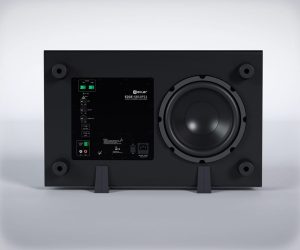

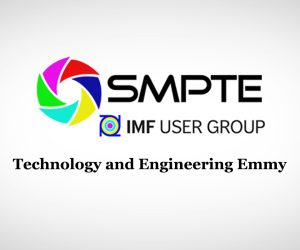



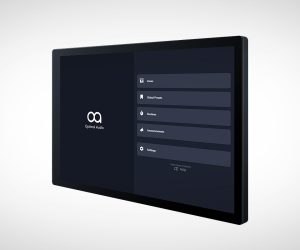

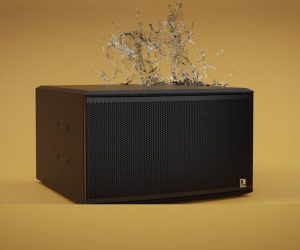
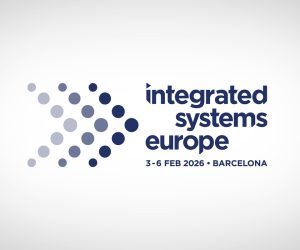



RESPONSES